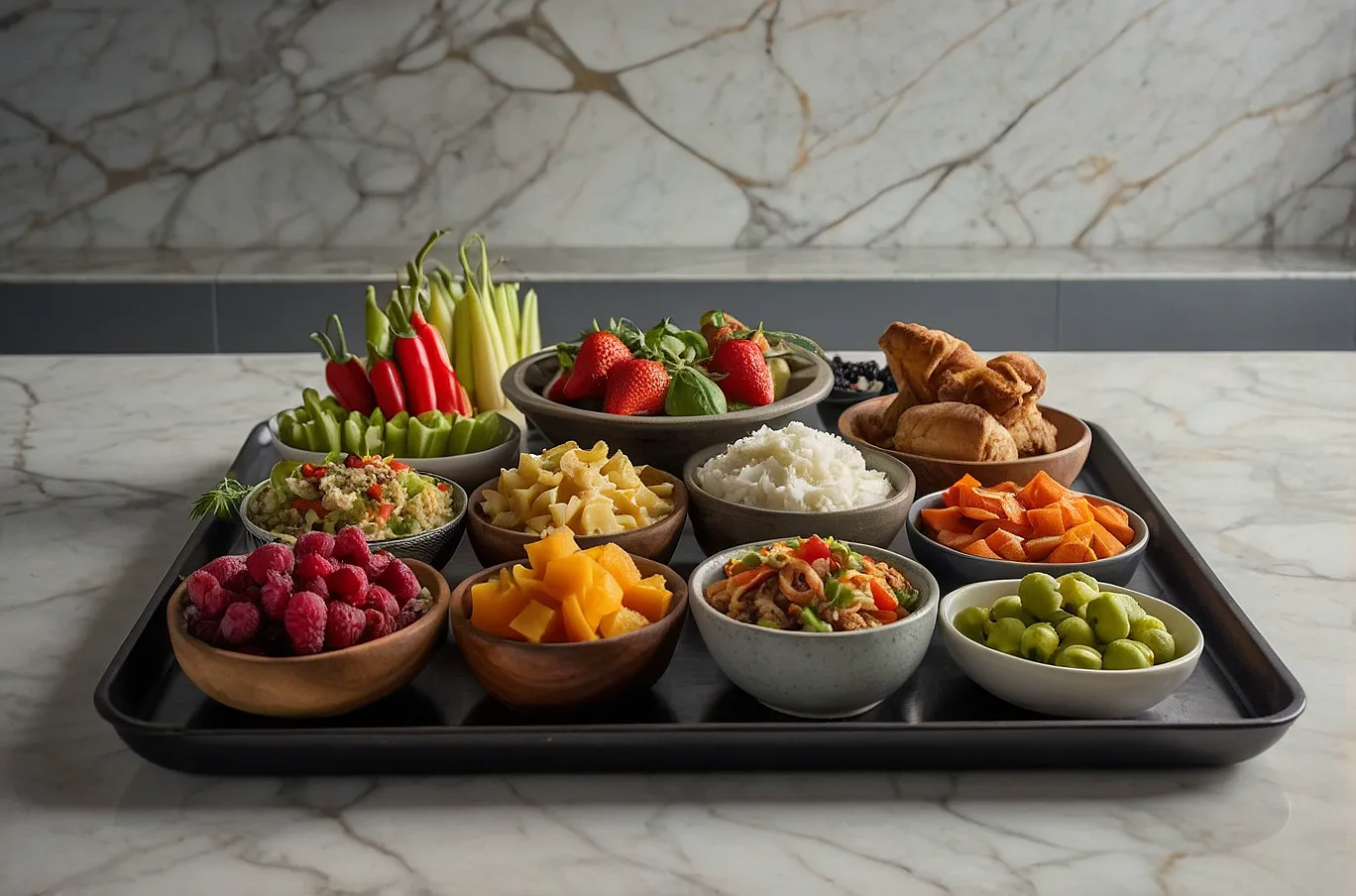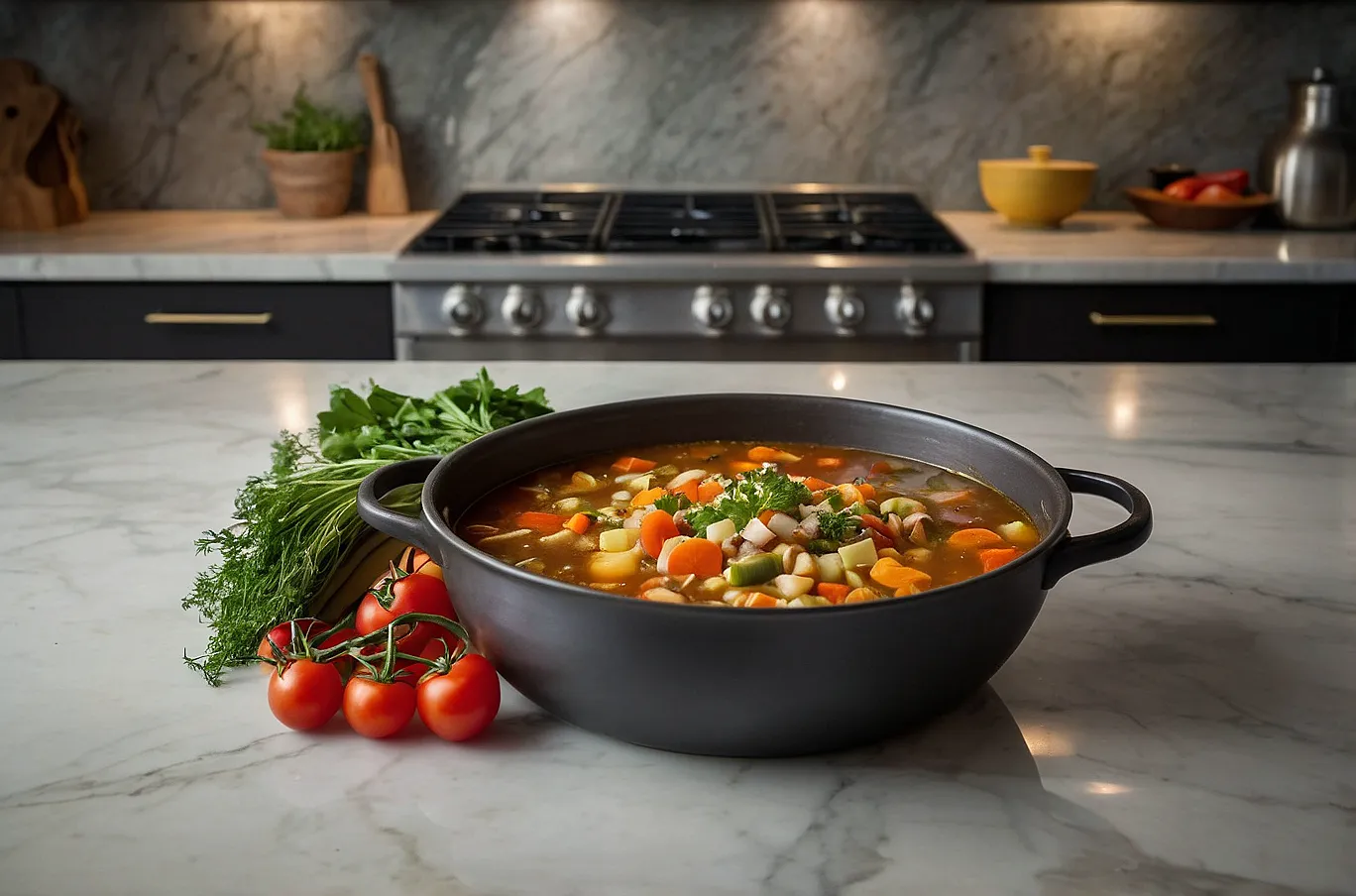 Other
OtherQuick Balanced Meals for Growing Families: Simplify Your Kitchen
As a young, busy mother, finding time for yourself can feel like an impossible dream, let alone preparing nutritious meals for your active family. The daily scramble to put food on the table can be exhausting, often leading to reliance on takeout or less-than-ideal convenience foods. But what if you could consistently serve up quick balanced meals for growing families without sacrificing your precious evenings or your sanity? This comprehensive guide is designed specifically for you, offering practical strategies and delicious ideas to transform your mealtime routine. We understand the unique challenges you face—from picky eaters and tight budgets to overflowing schedules and the constant demand for energy. Our goal is to empower you with the tools to create wholesome, satisfying dishes that fuel your children's development and support your family's overall well-being, all while reclaiming valuable time for what truly matters.
The Cornerstone of Family Health: Understanding Balanced Nutrition
Nourishing a growing family goes beyond just filling bellies; it's about providing the essential building blocks for physical and cognitive development. For busy parents, understanding the basics of balanced nutrition is the first step towards creating effective meal plans. A truly balanced meal incorporates a variety of food groups, ensuring children and adults alike receive adequate macronutrients (carbohydrates, proteins, fats) and micronutrients (vitamins, minerals).
What Makes a Meal "Balanced"?
A balanced meal typically includes a source of lean protein for muscle growth and repair, complex carbohydrates for sustained energy, healthy fats for brain development and nutrient absorption, and an abundance of fruits and vegetables for vitamins, minerals, and fiber. Think of it as a colorful plate: vibrant produce, a fist-sized portion of protein, and a modest serving of whole grains. Prioritizing nutrient-dense options over empty calories ensures every bite contributes positively to your family's health journey. This focus on wholesome ingredients helps build strong foundations.
Meeting Diverse Nutritional Needs
One of the biggest hurdles for busy mothers is catering to the diverse nutritional needs of different family members, from toddlers just starting solids to active school-aged children and hungry partners. Toddlers often need more healthy fats for brain development, while older children require increased calories and protein for their growth spurts. Adapting recipes to suit various ages and dietary preferences, such as introducing new textures gradually or offering components separately, is key to successful family meals. This adaptive approach ensures everyone gets what they need without extensive extra effort.
Strategic Meal Planning: Your Blueprint for Success

The secret to consistently serving up delicious and nutritious family meals lies in effective planning. Without a clear strategy, even the best intentions can crumble under the weight of daily demands. Strategic meal planning acts as your personal chef's assistant, guiding your grocery shopping, reducing food waste, and freeing up precious mental energy. It's about thinking ahead to simplify your week.
Weekly Meal Planning Templates and Tools
Embracing meal planning doesn't have to be complicated. Simple templates, whether digital apps or a pen-and-paper system, can dramatically streamline the process. Start by outlining your family's schedule for the week, noting busy evenings when quick assembly meals are essential. Then, brainstorm meal ideas that fit those time slots. Consider themed nights (Taco Tuesday, Pasta Friday) to spark creativity and involve your children in the planning. There are numerous free resources available online, from printable planners to apps that generate shopping lists directly from your meal choices. Leveraging these tools helps busy parents stay organized and minimizes last-minute stress.
Batch Cooking and Ingredient Prep
Batch cooking is a game-changer for families seeking efficiency in the kitchen. Dedicate an hour or two on a less busy day (like Sunday afternoon) to pre-chop vegetables, cook grains like quinoa or brown rice, or even prepare large batches of protein, such as shredded chicken or ground beef. These prepped ingredients can then be easily assembled into different meals throughout the week. For instance, a batch of roasted sweet potatoes can become a side dish one night and part of a breakfast hash the next. This foresight significantly cuts down on daily cooking time, making it easier to whip up wholesome dinners even on the busiest weekdays.
Smart Grocery Shopping: Fueling Your Family Wisely
A well-stocked pantry and refrigerator are the foundation of efficient meal preparation. Smart grocery shopping isn't just about saving money; it's about making deliberate choices that support your meal plan and minimize unnecessary trips to the store. This strategic approach ensures you always have the right ingredients on hand for nutritious family dinners.
Creating an Efficient Shopping List
Before stepping foot in the grocery store, review your meal plan and take stock of your existing pantry. Organize your shopping list by grocery store sections (produce, dairy, pantry, frozen) to save time and prevent impulse purchases. Prioritize whole, unprocessed foods like fresh fruits, vegetables, lean proteins, and whole grains. Buying seasonal produce can also offer cost savings and superior flavor. Consider making a digital list that can be shared with family members and updated easily, ensuring nothing is forgotten. This disciplined approach to grocery shopping is pivotal for maintaining a balanced diet.
Pantry Staples for Quick Meals
Maintaining a well-stocked pantry with versatile staples is crucial for whipping up last-minute healthy meals. Think about items that have a long shelf life and can form the base of many dishes.
- Grains: Quinoa, brown rice, whole wheat pasta, oats.
- Legumes: Canned beans (black, kidney, chickpeas), lentils.
- Canned Goods: Diced tomatoes, tomato paste, tuna, salmon.
- Spices & Herbs: A diverse collection for flavor without added sodium.
- Healthy Fats: Olive oil, avocado oil, nuts, seeds.
Time-Saving Cooking Techniques for Busy Moms

In the whirlwind of daily life, every minute counts, especially when it comes to meal preparation. Adopting smart cooking techniques can dramatically reduce your time in the kitchen without compromising on flavor or nutritional value. These methods are designed to maximize efficiency and minimize cleanup, allowing you more time to spend with your family or simply to relax.
One-Pot Wonders and Sheet Pan Dinners
The ultimate allies for busy mothers are one-pot and sheet pan meals. These methods minimize dishes and often require minimal active cooking time. For a one-pot meal, think chili, soups, or pasta dishes where all ingredients cook together in a single pot or Dutch oven. Sheet pan dinners involve tossing protein (chicken, sausage, tofu) and vegetables (broccoli, bell peppers, sweet potatoes) with oil and seasonings, then roasting them on a single sheet pan until done. Both approaches are incredibly versatile, allowing for endless flavor combinations and easy customization to suit picky eaters. Cleanup is a breeze, which is a major win for tired parents. These strategies are fantastic for family meal planning.
Leveraging Kitchen Appliances
Modern kitchen appliances are your secret weapons for preparing wholesome meals quickly.
- Instant Pot/Pressure Cooker: Drastically reduces cooking time for staples like dried beans, tough cuts of meat, or even whole chickens. You can make tender pulled pork in under an hour, or cook rice in minutes.
- Slow Cooker/Crock-Pot: Perfect for hands-off cooking. Prep ingredients in the morning, set it, and come home to a warm, ready-to-eat dinner like pot roast, stews, or even breakfast oats.
- Air Fryer: Offers a crispy texture to vegetables and proteins with less oil and in less time than a conventional oven, making healthy alternatives to fried foods. It's great for quick weeknight dinners.
Kid-Friendly Twists and Picky Eater Solutions
One of the most common challenges for busy mothers is navigating the world of picky eaters. It can feel disheartening when your carefully prepared meal is met with resistance. However, with a few clever strategies, you can encourage your children to try new foods and make mealtime a more positive experience for everyone. These simple adjustments can make all the difference.
Involving Kids in the Kitchen
Children are often more willing to eat foods they've helped prepare. Involving them in age-appropriate kitchen tasks can significantly increase their enthusiasm for trying new dishes. Toddlers can wash vegetables or stir ingredients, while older children can measure, chop (with supervision), or set the table. Turn it into a fun activity, emphasizing the joy of cooking and the pride of creating something together. This hands-on approach builds positive associations with food and empowers them to make healthier choices. It also teaches them valuable life skills that contribute to a healthy lifestyle.
Disguising Veggies and Nutrient Boosts
For those super picky eaters, sometimes a little culinary stealth is required.
- Puree Power: Blend cooked carrots, spinach, or zucchini into pasta sauces, soups, or even mac and cheese.
- Smoothie Savvy: Add a handful of spinach or kale to fruit smoothies; the fruit masks the green flavor and color.
- Sneaky Shreds: Finely grate carrots or zucchini into meatballs, meatloaf, or muffins.
- Fritter Fun: Create vegetable fritters or pancakes using grated veggies and a minimal amount of binder.
Budget-Friendly Bites: Eating Well Without Breaking the Bank
Providing nourishing meals for a growing family doesn't have to strain your finances. In fact, home-cooked meals are almost always more economical and often more nutritious than restaurant or takeout options. With smart planning and strategic shopping, you can create delicious and wholesome dishes that fit comfortably within your budget.
Maximizing Value with Staples and Seasonal Produce
The foundation of budget-friendly eating lies in utilizing affordable, versatile staples. Opt for dried or canned beans and lentils, which are excellent sources of protein and fiber at a fraction of the cost of meat. Whole grains like oats, rice, and pasta also offer great value. When it comes to produce, buying fruits and vegetables that are in season often means lower prices and better quality. Consider purchasing larger quantities of long-lasting produce like potatoes, onions, and carrots. Shopping at local farmers' markets can also sometimes yield good deals on fresh, seasonal items while supporting your community. This approach ensures healthy nutrition without overspending.
Creative Leftovers and Meal Repurposing
One of the most effective ways to stretch your food budget and reduce waste is by creatively repurposing leftovers. Instead of serving the same meal twice, transform components into something new. For example:
- Leftover roasted chicken can become chicken salad sandwiches, a chicken and vegetable stir-fry, or a quesadilla filling.
- Extra rice can be turned into fried rice, a quick rice bowl with added veggies and protein, or even rice pudding for dessert.
- Cooked vegetables can be added to omelets, frittatas, or blended into a creamy soup base.
Embracing Flexibility: When Plans Change

Even the most meticulously planned schedule can be derailed by unexpected events: a sudden sick day, an impromptu playdate, or simply an overwhelming day. The key to long-term success in meal prep for busy families is embracing flexibility rather than striving for rigid perfection. Life happens, and your meal plan should be able to bend without breaking.
Having a "Backup Meal" Strategy
Always have a few "backup meals" in your arsenal for those days when cooking feels impossible. These should be meals that require minimal effort and ingredients you typically have on hand. Think about simple options like:
- Whole wheat pasta with canned marinara sauce and frozen meatballs.
- Tuna melts on whole grain bread with a side of pre-washed salad greens.
- Quesadillas with canned beans, cheese, and a few chopped veggies.
- Breakfast for dinner: eggs, whole grain toast, and fruit.
Learning to Adapt and Adjust
Recognize that some days will be more challenging than others, and it's perfectly okay to adjust your plans. If you've planned a complex meal but are utterly exhausted, swap it for one of your backup meals. If you run out of a specific ingredient, get creative with substitutions rather than making an extra grocery trip. The goal is progress, not perfection. Celebrate the small victories—the nights you cooked at home instead of ordering in, or the new vegetable your child tried. This adaptability reduces stress and ensures that your commitment to providing nutritious family meals remains sustainable in the long run. It truly helps with maintaining balanced nutrition.
Beyond the Plate: The Benefits of Family Meals
While the primary goal of creating quick, balanced meals is to provide sustenance, the benefits of shared family mealtimes extend far beyond nutrition. These moments at the table foster connection, communication, and a sense of belonging that are invaluable for a growing family's well-being.
Fostering Connection and Communication
In our fast-paced world, family meals offer a precious opportunity to slow down and reconnect. These are moments for children to share about their day, for parents to listen attentively, and for everyone to engage in meaningful conversations. Research consistently shows that families who eat together regularly tend to have stronger bonds, and children often perform better academically and are less likely to engage in risky behaviors. Make mealtime a screen-free zone to encourage active engagement and communication. These shared experiences build lasting memories and strengthen family ties, reinforcing positive family dynamics.
Teaching Healthy Habits and Life Skills
Family meals are a powerful classroom for teaching healthy eating habits and essential life skills. Children learn by observing, so when they see parents choosing nutritious foods and enjoying a variety of flavors, they are more likely to adopt similar habits. Involving them in meal preparation, setting the table, or cleaning up teaches responsibility and teamwork. It also provides opportunities to discuss nutrition, food origins, and the importance of a balanced diet in an age-appropriate way. These lessons learned at the dinner table contribute significantly to a child's overall development and their long-term health, making it easier for them to continue enjoying wholesome meals as they grow.
Empowering yourself to create quick balanced meals for growing families is one of the most impactful ways you can support your children's health and your own well-being. It's a journey that prioritizes efficiency, smart planning, and a little bit of flexibility. By embracing strategic meal planning, smart grocery shopping, and time-saving cooking techniques, you can transform mealtime from a source of stress into a source of joy and connection. Remember, every step you take towards a more organized and intentional approach to family meals is a step towards a healthier, happier household. You've got this, busy mom!
